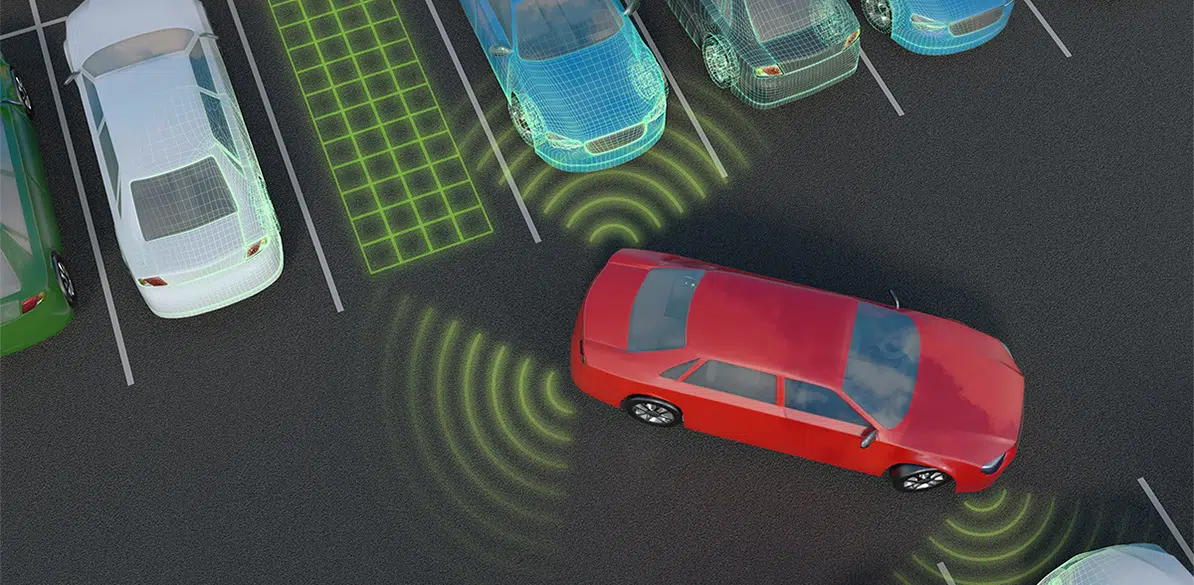Parking Sensors
What are parking sensors and how do they work?

Objective
To warn the driver, during a parking maneuver, of the existence of obstacles or pedestrians near the rear or front of the vehicle.
This system makes it possible to measure the space available for parking and the vehicle itself indicates whether the maneuver is possible and if the vehicle will fit in the space.
In the most advanced systems, the vehicle can even perform assisted parking (it parks itself) using the information it receives from the sensors.
How it works
The rear parking sensors are activated when reverse gear is engaged. These are located in the rear bumper and they determine the distance from the rear of the vehicle to the object. The same applies to the front sensors, which are activated when 1st gear is engaged, operating at low speeds; they detect objects and pedestrians in front of the vehicle when parking or moving the vehicle.
The system accurately calculates the distance to the object and when approaching the object, it alerts the driver using audible or visual warnings, or a combination of the two.
The warnings are intermittent and slow when the object is approximately one meter away from the vehicle, but by the time it is less than thirty centimeters distant, the warning sound becomes continuous.
Components
- Ultrasonic sensors: located at the rear of the vehicle (in some cars also at the front). Normally there are four ultrasonic sensors for each bumper, covering the entire rear or front of the vehicle.
- Acoustic warning: either a specific sound generator or the vehicle’s own loudspeaker system is used, in which case the sound is emitted through the loudspeakers in the area where the obstacle is located.
- Display: graphically indicates where the obstacle is located and how far away, using a color code where red is the closest to the object.
- System deactivation button: the system can be deactivated, in case you do not want to use it.
Collisions avoided
- Collisions with other vehicles or other objects when driving at a very low speed.
- Possible collisions with pedestrians.
Effectiveness
According to a study by the Insurance Institute for Highway Safety (IIHS), accidents are reduced by 78% thanks to the use of parking sensors, a reversing camera and rear automatic braking system, while with parking sensors and reversing camera only, accidents are reduced by 42%; if only parking sensors are incorporated, accidents are reduced by 28%.
Use and limitations
Caution should be exercised when starting the car, it may take a few moments for the parking sensors to start working, and during this period of time the system does not warn you if there is an object or person in the way.
The sensors could become covered with snow or mud in blizzards or when driving on muddy roads or highways. This may cause them to falsely detect an object, in which case it would be advisable to deactivate the system.
The most popular system only warns the driver, it does not brake the vehicle. In newer models the system is capable of applying the brakes, thereby avoiding a collision.
Cost
Rear parking sensors are fitted in many vehicles, although in low-end vehicles or entry-level models, they are not standard. To add the system in these cases means an additional payment, which for rear parking sensors is around 250 € , while for both front and rear sensors the price is around 700 €.
Mandatory
Obstacle detection systems for reversing maneuvers become mandatory in July 2022 for new approvals and in July 2024 for new vehicle registrations.
